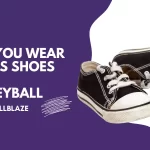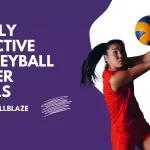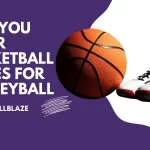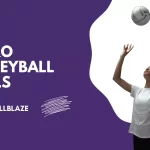Volleyball rebounders are training tools that help volleyball players improve their passing and setting skills as well as their spiking. The ball is returned to players after each hit, allowing them to practice independently.
However, I have observed rebounder players using it incorrectly, which negates the purpose of the exercise.
Rebounder players often make the mistake of incorrectly using it, which renders the whole exercise useless.
How to Use a Volleyball Rebounder?
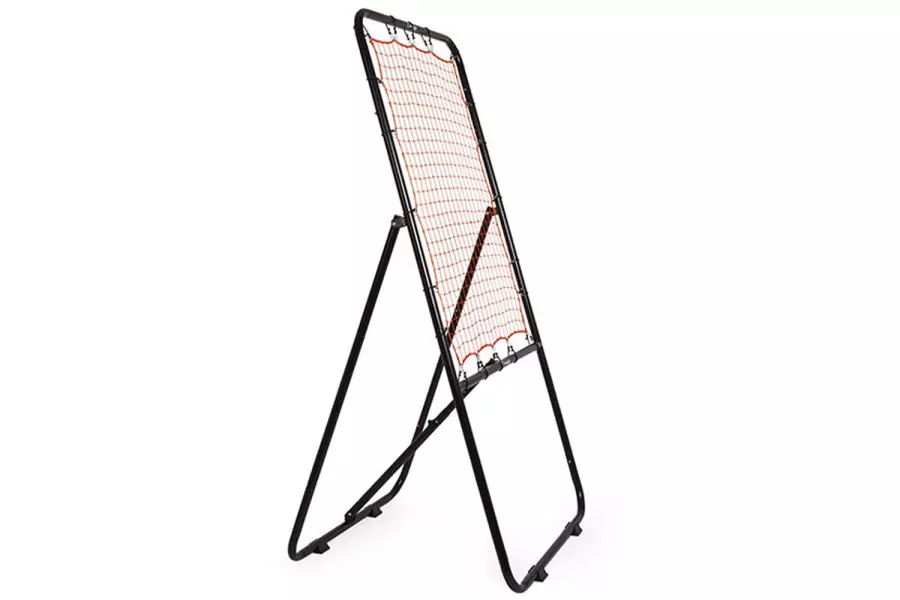
I will show you step-by-step how to use a volleyball rebounder and provide a step-by-step guide to do so:
Rebounder setup
Volleyball rebounders are generally plug-and-play, meaning you just need to unfold them to use them.
Nets or surfaces that bounce the ball back to the player will be used in rebounders, while frames that hold the ball in place will also be used.
The rebounder needs to be positioned now.
It would be best if you played in an open area where there were no other objects or people that could get hit by the ball.
You are good to go if you have a backyard.
Other than that, you can move freely anywhere without having fragile objects nearby.
Getting in Shape
Observe the rebounder from a distance of a few feet. There is no one-size-fits-all rule here.
The exact position you take depends on your personal preference, but what drill you are doing and how the rebounder is adjusted are also important.
The volleyball rebounder can be adjusted at different angles.
Whenever I move the rebounder a frame low toward the floor, I stand 4 feet back from where I am standing when the rebounder is facing upward.
You will see the ball coming towards you faster if the rebounder’s face is lower.
In case you want a taste of the intense volleyball games, you can always stand closer to the rebounder.
Practicing Skills
Using a rebounder, you can sharpen the skill you want to improve.
In addition to passing, setting, and spiking, a rebounder can assist you with all your volleyball skills. The way you set it up and use it is up to you. Each skill requires you to do the following.
Passing
The ball should be thrown up and passed (bumped) to the rebounder. That’s all there is to it. That’s right, isn’t it?
Nevertheless, there is a complication that will determine whether you have a good or a bad rebounder experience.
Rebounders with good quality will rebound the same amount from all surfaces.
Whenever you deviate from that magical center point, you will get less rebounding, because you will compromise on the quality.
Because of this, it is important to aim at the right rebounder’s point.
Upon hitting it, you will need to adjust your position and footwork to receive the ball.
Setting
Players practice setting with the rebounder in order to improve their volleyball skills.
Set the rebounder up by tossing the ball up. Practice controlling and positioning your hands. You should be able to set the ball again if it returns in an arc.
However, once you have set it, you must follow up and smash the ball hard on the rebounder so that it can come back to you.
Serving
In accordance with the rotation policies of the game, every player has to serve. In this sense, volleyball players have the most lethal weapon at their disposal.
It is important to stand quite far from the rebounder in order to practice this skill.
It is recommended that you stand at least 10 to 12 feet away from the rebounder, facing them. The ball is then served to the rebounder.
As you position yourself to return the ball, serve the ball to the rebounder.
Before moving on to the next round, you must receive the ball, pass it, set it, and smash it.
Spiking
Spike the ball into the rebounder after tossing it up. Depending on how the returned ball is handled, either pass it or set it.
Rebounder adjustment
In order to change the trajectory of the ball returned, you can adjust the angle of the rebounder.
Different challenges and scenarios can be simulated using this method.
It is possible to adjust the tension on some rebounders in order to change the force of the return. Use this option whenever you practice serving and smashing, especially if it is available to you.
Choosing the Right Volleyball Rebounder
Your skill level and training goals will determine the best rebounder for you. Make sure the product you choose is portable, adjustable, and durable.
Precautions When Using a Volleyball Rebounder
There are plenty of safety precautions to take when practicing with the volleyball rebounder, including:
- To prevent the rebounder from tipping, anchor it securely.
- Make sure you are aware of your surroundings so you won’t trip or run into anything.
- Whenever you practice more aggressive shots, wear appropriate protective gear.
You may enjoy reading Can You Use a Baseball Rebounder for Volleyball?
Rebounder Maintenance
If you maintain the rebounder properly, you can practice the game with all its magic.
The following steps can be taken to accomplish this:
- During each practice session, inspect the rebounder’s netting and surface for wear and tear.
- Make sure any loose screws or bolts are tightened.
- Depending on the situation, you may need to clean the surface or netting.
Frequently Asked Questions
Are volleyball rebounders suitable for beginners?
For beginners, volleyball rebounders are a great way to develop fundamental skills.
Can a volleyball rebounder replace a practice partner?
It is possible to create more dynamic gameplay scenarios when practicing with a partner rather than just with rebounders.
Do I need any special equipment to use a volleyball rebounder?
Volleyballs and appropriate training attire are required, but no additional equipment is necessary.
How can I adjust the tension of the net on my volleyball rebounder?
You can adjust the tension system on most rebounders to suit your preference.
What is the ideal training duration for using a volleyball rebounder?
A good starting point is to spend 30-60 minutes practicing focused exercises.
Conclusion
Sometimes it’s beneficial to have another player watch you. Their feedback can help you improve your technique and form. Use the rebounder to record yourself. Your form or technique can be improved by identifying any errors.
Ball-handling skills can be significantly improved by using a volleyball rebounder consistently. In order to achieve the best results from your sessions, you should practice regularly and with purpose, focusing on technique and form.
However, volleyball rebounders are not the only tools you can use to improve your skills. You can also get in shape on the volleyball court with Setter Workouts.
You can also read How to Build a Volleyball Rebound Board?

